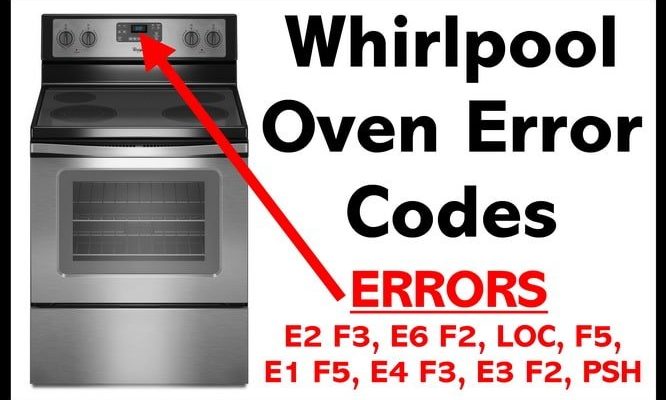
Understanding what this error code means can save you from potential headaches down the line. Simply put, error code E2 typically indicates a temperature sensor problem within your Whirlpool appliance. Think of it as your oven’s thermostat acting up. You wouldn’t want your oven to bake cookies at the temperature meant for broiling a steak, right? That’s why knowing what to do next can help you keep your meals on track without unexpected surprises.
What Does Error Code E2 Mean?
You might be wondering what exactly the E2 error code signifies in your Whirlpool oven or range. This code generally points to a temperature sensor issue. Imagine the temperature sensor as the internal gauge that ensures your oven heats to the right setting. When this sensor isn’t working properly, it can’t send accurate information to the control board, which is why your oven alerts you with the E2 code.
In more technical terms, the temperature sensor is responsible for monitoring the oven’s heat level. If it detects something amiss, like a rapid shift in temperature or a failure to reach the set heat, your oven will send up a red flag in the form of the E2 error code. It’s equivalent to having a thermostat in your house that’s on the fritz—neither comfortable nor efficient.
Ignoring this error isn’t recommended because it could lead to further complications. An oven that isn’t monitoring its temperature accurately might cause your meals to burn or not cook at all. So, it’s essential to address this issue sooner rather than later to keep your culinary creations on point.
What Causes the E2 Error?
The causes behind the E2 error can vary, but they generally stem from a few common culprits. First up, the temperature sensor itself might be faulty. Over time, wear and tear or even a manufacturing defect can affect its functionality. Imagine it like a compass that’s no longer pointing north—without a clear direction, it’s easy to get lost.
Another possibility is a poor connection between the sensor and the control board. If the wiring that links these components is damaged or disconnected, the control board might not receive accurate readings, prompting the E2 code. It’s a bit like trying to watch a movie with a scratched DVD; the player struggles to interpret the data it receives.
Lastly, external factors such as power surges can wreak havoc on your appliance’s electronic components, including the temperature sensor. That’s why maintaining your oven and ensuring it’s plugged into a proper outlet can prevent these issues. In short, understanding these potential causes arms you with the knowledge needed to troubleshoot effectively.
Steps to Resolve the E2 Error
With the E2 error code blinking ominously, you’re probably eager to find a solution. Don’t worry, there are a few steps you can take. First, consider doing a simple reset of your oven. Unplug it from the power source for a minute or two, then plug it back in. This is a lot like rebooting a computer—it helps clear up minor glitches.
If the error persists, check the oven’s temperature sensor. This may require consulting your oven’s manual to locate and inspect it. Ensure that all connections are intact and secure. Visual anomalies like frayed wires or corrosion can indicate the need for a replacement. If the issue seems beyond your expertise, it might be time to call in a professional technician.
While waiting for repairs, consider using alternative cooking methods, like a stovetop or microwave, to avoid disrupting your meal routine. Understanding the repair options and knowing when to seek professional help can save you from unnecessary stress and ensure your oven is back to reliable performance.
Preventing Future Error Codes
Once you’ve tackled the E2 error, it’s wise to adopt some preventive measures. Regular maintenance is key. Think of it as a routine check-up for your oven to keep it running smoothly. Periodically inspect the temperature sensor and all connections for signs of wear or damage. This proactive approach can help catch potential issues before they escalate.
Also, ensure your oven is plugged into a surge-protected outlet. Power surges can cause harm to sensitive electronic components within your appliance. Using a surge protector acts like a guard, fending off harmful voltage spikes that can scramble your oven’s electronics.
Lastly, avoid exposing your oven to extreme temperature changes. Gradually heating or cooling your oven helps maintain the integrity of its internal components. By incorporating these preventative strategies, you help ensure your oven remains in tip-top shape, ready to tackle any culinary challenge you throw its way.
In summary, while the E2 error code may seem daunting at first, understanding what causes it and how to address it can help you deal with it effectively. With the right knowledge and maintenance practices, you can keep your Whirlpool oven functioning flawlessly and continue creating delicious meals without interruption.
